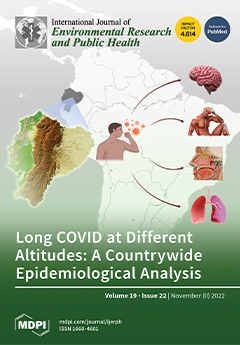Int. J. Environ. Res. Public Health, Volume 19, Issue 22 (November-2 2022) – 803 articles
The long-term sequelae of COVID-19 (called long COVID-19) have been studied significantly during the last year of the pandemic; however, the study of these sequelae in populations living at different altitudes has not been carried out so far. Around the world, more than 150 million people live at above 2000 m of altitude, and Ecuador, a country of enormous biodiversity, has cities located at different elevations, making it the appropriate place to study the impact of this phenomenon.
The authors of Izquierdo-Condoy et al. consolidate data from a wide range of altitudes and provide helpful information about the impact of COVID-19 at different elevations and what the role of living at high altitudes could be in the sequelae of acute disease (long COVID-19) and the other characteristics of the inhabitants. View this paper
- Issues are regarded as officially published after their release is announced to the table of contents alert mailing list.
- You may sign up for e-mail alerts to receive table of contents of newly released issues.
- PDF is the official format for papers published in both, html and pdf forms. To view the papers in pdf format, click on the "PDF Full-text" link, and use the free Adobe Reader to open them.





